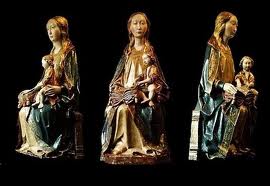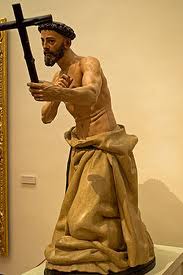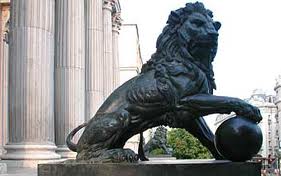Spanish Sculpture XII-XIX Centuries
The period between the 12th Century and the 19th Century saw many different styles of sculpture come and go, as well as some styles mixing together. However these centuries are the centuries that art historians know about, as the information on individual sculptors is readily available in books and manuscripts from the time.
Gothic Spanish Sculpture

Gothic sculpture began to emerge in the 12th Century and it was closely linked to the development of the gothic style of architecture, as many of the gothic sculptures that were produced were often used to embellish the buildings of the era. Figures that were produced during this period tended to show much more emotion than they had in early periods. In the Roman period, the figures had been very stiff, but they came to be more natural in the 12th and 13th Centuries.
Gothic sculptures in Spain were produced by such sculptors as Alejo de Vahía and Gil de Silhoé, who have been adopted into the Spanish culture and history, despite both men being from a more northern European background.
Much later on in this period, Spain was also a country that was pioneering in the development of the Plateresque style. The Plateresque style or 'Plateresco' style was developed in Spain from the 16th Century. The name 'Plateresco' means 'like a silver-smith' and refers to the intricate and detailed designs of carvings and sculptures at this time.
Baroque Spanish Sculpture

Baroque sculpture also flourished in Spain in the 16th, 17th and 18th Centuries. This style was very realistic yet intimate; much more so than the same style in other parts of Europe. In Spain, it developed into two strands: the Andalusian strand which was centred in Seville and Granada, of which Juan Martínez Montañés and Pedro de Mena were key players; and the Castilian strand which was centred in Madrid and Valladolid, of which Gregorio Fernández and Juan de Juni were important figures.
Spanish Baroque sculpture tended to be religiously themed and the most common material of this era was polychromed wood, a material that had originated in Europe during the Middle Ages. In fact, nearly all the Baroque sculptures of this period were commissioned by the Catholic Church. Subjects would include the Virgin Mary, Christ and various Saints, the most commonly sculptured were Spanish Saints. The sculptures would be used to decorate the insides of churches and cathedrals, or used as processional pieces that would be carried around on one of Spain's many festival days.
Murcia became an important place during the 18th Century for the development of Spanish sculpture with the rise of Francisco Salzillo, a Baroque Spanish sculptor who spent the majority of his life there.
Baroque sculpture was so popular that the style continued to be used into the 19th Century. However during the final decades of the 18th Century, Neoclassicalism began emerging, which would become one of the styles that would be used significantly during the 19th Century period of Spanish sculpture.
19th Century Spanish Sculpture

The 19th Century was a time of a culmination of many styles, with different sculptors varying between styles. The principle styles of this period included Neoclassicalism, Realism and Naturalism. Although these styles were not so radically distinct, they contributed to there being a wide variety of sculpture in Spain from this century.
Elements of Neoclassical sculpture came to be seen in the 19th Century in the works of Ponciano Ponzano. Unfortunately for Ponzano, this style was not always popular in Spain and so he has only been truly recognised as a great Spanish sculptor today.
Realism flourished in Spain and it was a style that was used by the Spanish sculptor Antonio Susillo. Yet he still managed to make the style his own, by conveying a lot more power and movement in the many public monuments that he produced.
However, Susillo's production rate of public monuments was certainly over shadowed by that of Mariano Benlliure. However Benlliure chose to work in the Naturalist style. He preferred to sculpt his subjects in a more natural position rather than a manufactured one. Mateo Inurria also sculpted in a natural style.
